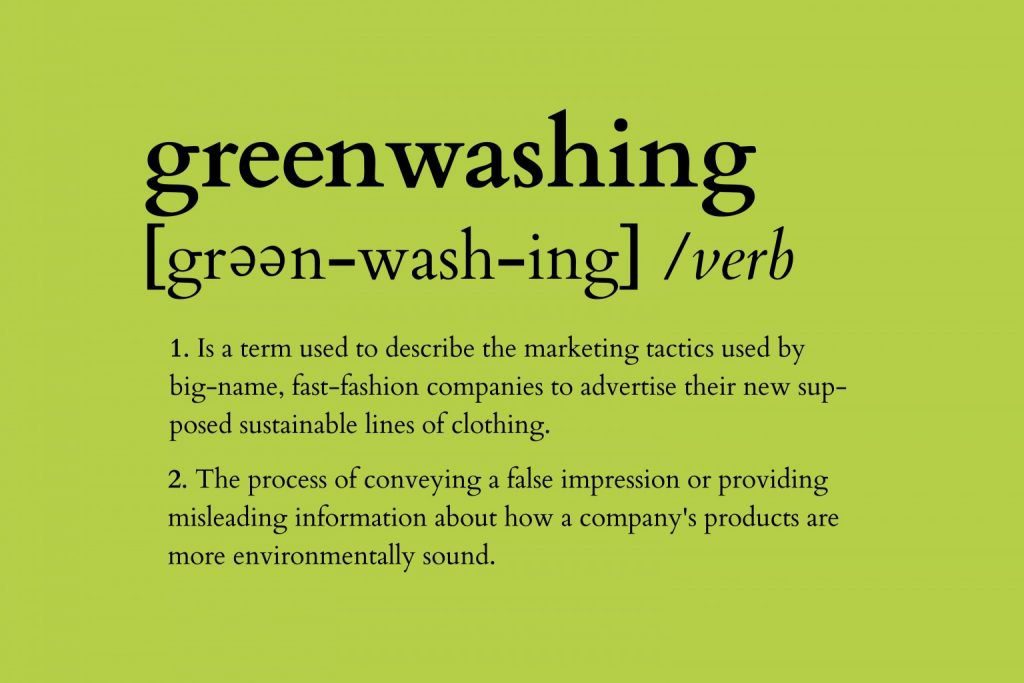Understanding The Who, What, Why and How of Faking Sustainability
Not all fashion brands have your best interests at heart and many are putting profits ahead of the planet. For those who care about the future of our planet and minimising harm to it, there’s a lot to navigate. To help you, we have put together your complete guide to understanding the the who, what, why and how of greenwashing in the fashion industry.
What is Greenwashing?
Greenwashing is a marketing ploy that is used to make a brand or product seem more environmentally friendly than it really is. It is false or misleading information provided to consumers to fool us. Instead of cleaning up their supply chain or paying a living wage, brands invest money in marketing that makes them look good, without actually putting in the hard yards.

Why Do Fashion Labels Engage in Greenwashing?
Put simply, it’s because they want us to buy their products. “Sustainability” searches on fashion platform Lyst rose to 75% in 2020. Conscious consumerism is on the rise, and brands want in. But instead of working to transforming their supply chains or investing in eco-friendly fabrics, they make it look like they are engaging in sustainable practices. Profits come first and it can be a massive cost to start changing supply chains, sourcing sustainable fabrics and paying fair rates to production workers. It’s just so much more profitable to stick with what they’ve been doing and rely on PR and marketing to make them look like they’ve taken a stand to help protect the planet.
Greenwashing is “now the biggest marketing tool used by brands”.

Who is Doing the Greenwashing?
Many brands have dipped their paintbrush into the greenwashing pot. But, brace yourselves. None seem to be missing the mark as much as H&M.
H&M’s Conscious Collections claimed to be using recycled and sustainable fabrics. It sounded great, but in comparison to the sheer volume of stock piles around the store that were anything but sustainable, it proved to be not much more than a PR stunt. The company was called out for fraudulent marketing by the Norwegian Consumer Authority. While H&M claimed to be using totally sustainable fabrics, they didn’t specify the actual percentage of it in their fabrics. That’s considered extremely important information for consumers to be able to make a conscious and reliable choice. The court also found that roughly 30% of H&M’s certified organic cotton clothing line was actually cross-contaminated with Genetically Modified cotton, making them guilty of fraudulent marketing.
Fashion Spoiler alert. H&M isnt alone in this game. Zara, ASOS and Uniqlo have all been caught in the wrong shade of green.

How Do I know if a Company is Greewashing?
Identifying a brand that is greenwashing can sometimes be tricky. They can be misleading with the clever use of words such as “green”, “nature”, “earth”, “eco”, “sustainable” and “recycling” in their visual marketing. Extensive use of earth tones, landscapes and animals also add to the mirage.
A brand that is proud of its eco-credentials will share them on its webpage. Often they will list things such as the fabrics they use, any certifications they or their factories have, which factories they use for manufacturing and sometimes any goals they have for the future. If a brand is vague on these things, take it as a red flag.

Tools to Help You Identify Greenwashing & Avoid Supporting Brands that Do It
To make sure you don’t waste your hard-earned money on a greenwashing brand, it’s best to do a little research. If something feels a bit wrong, ask some questions and look for answers on their websites:
- Who Made My Clothes? (check out Fashion Revolution for more info)
- Where do they source their fabrics from?
- Do their factories have any certifications?
- Where are their factories located?
- Do their workers receive a living wage?

The Good On You app is also a fantastic way to check whether a brand is naughty or nice. The app also supplies you with other ethical brand recommendations if your favourite brand isn’t a good egg.
Keep your eyes peeled for certifications such as B Corp or GOTS. These are all very helpful when sorting ethical brands from the greenwashing ones.
With way more brands claiming to be sustainable than actually are, it’s satisfying and empowering to be able to make informed choices and shop sustainably with confidence.
___________
Like this post? Then you’ll like to see:
10 Australian Fashion Brands to Get Excited About
Your Complete Guide to Plastic Free July
Is Upcycling the New Normal?
How You Can Do Your Part Against Fast Fashion
Fashion Bags that Help Reduce Carbon Emissions
Your Guide to Sustainable Australian Activewear
Or, check out the best vintage stores in your capital city. Tap on the links for each city: Melbourne, Sydney, Adelaide, Brisbane, Perth, Canberra and Hobart.
